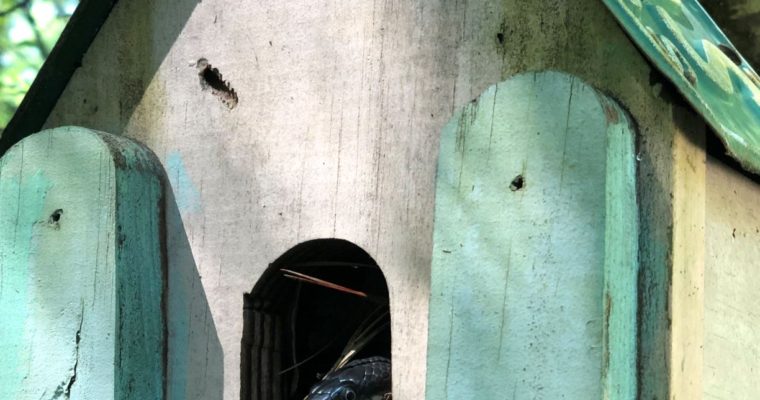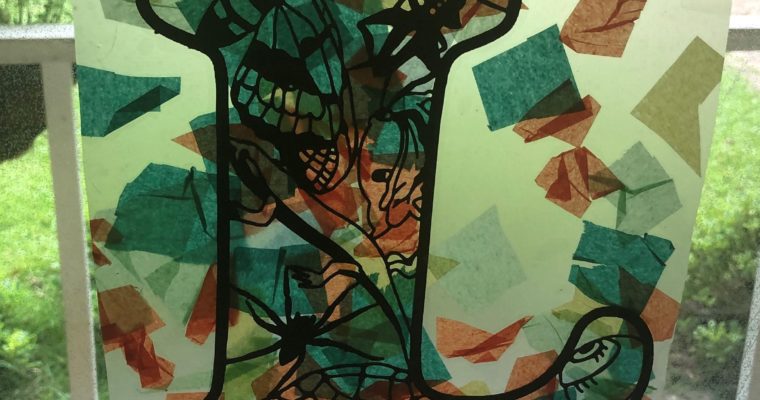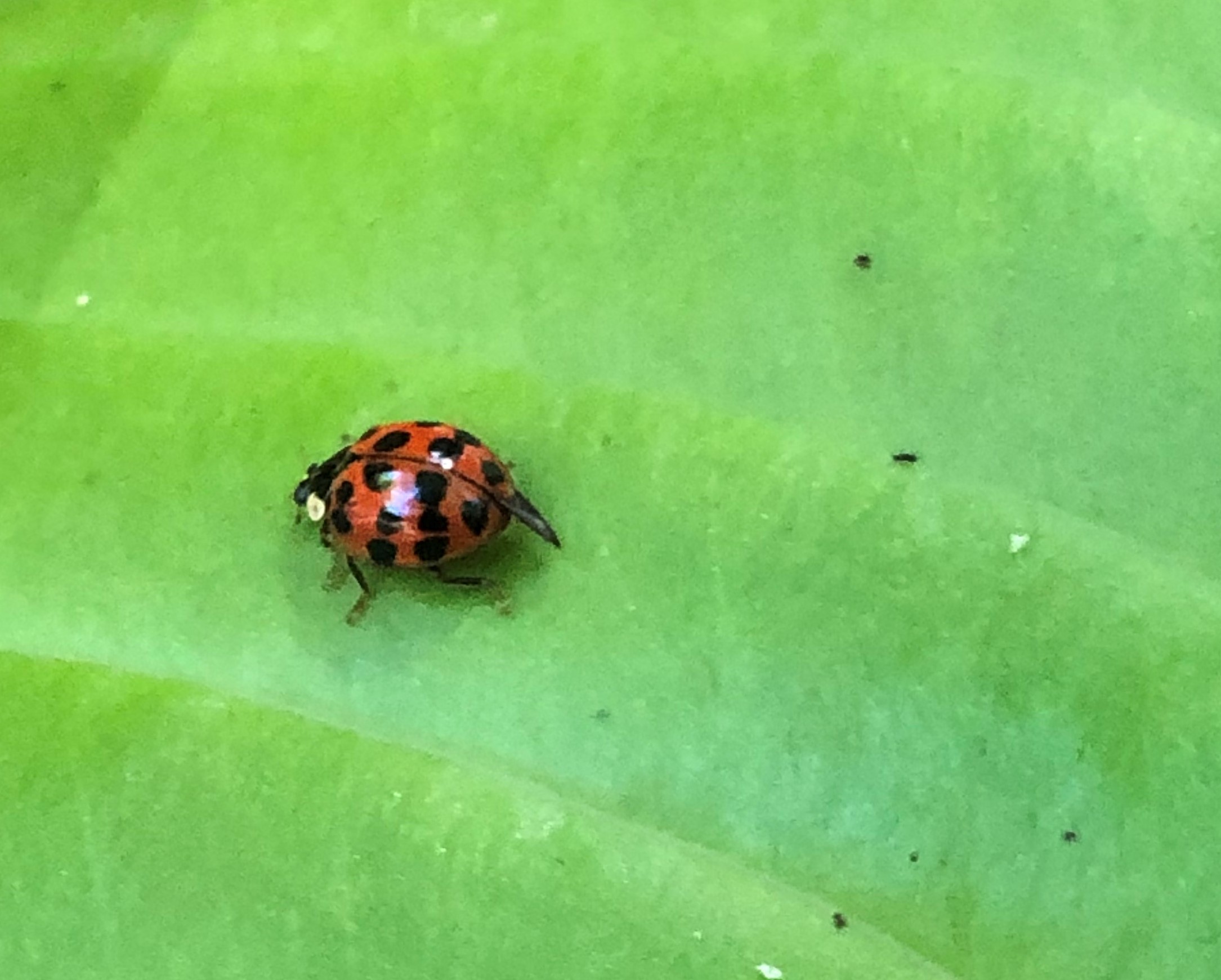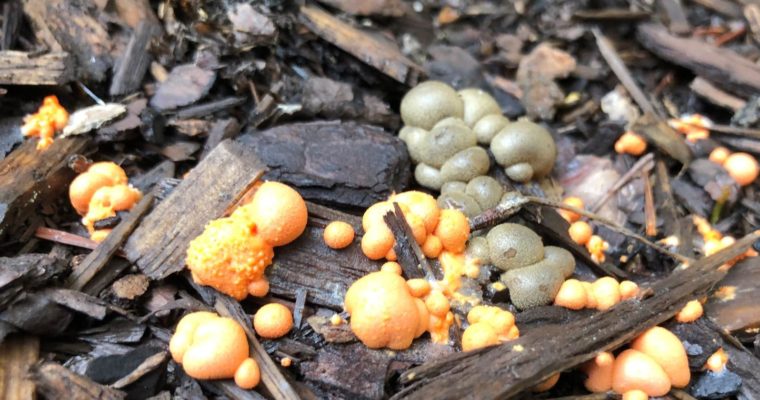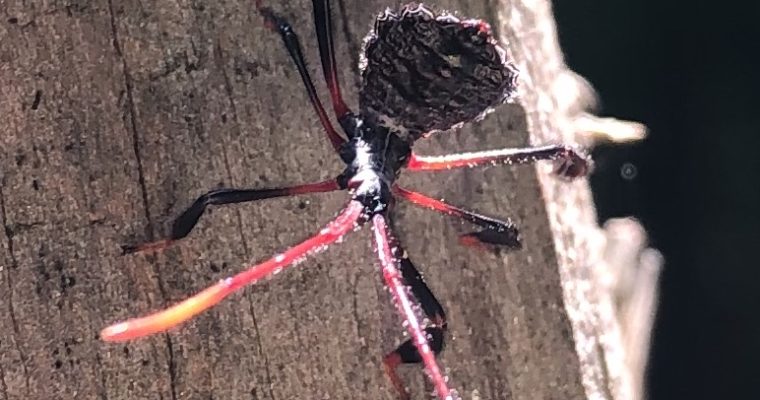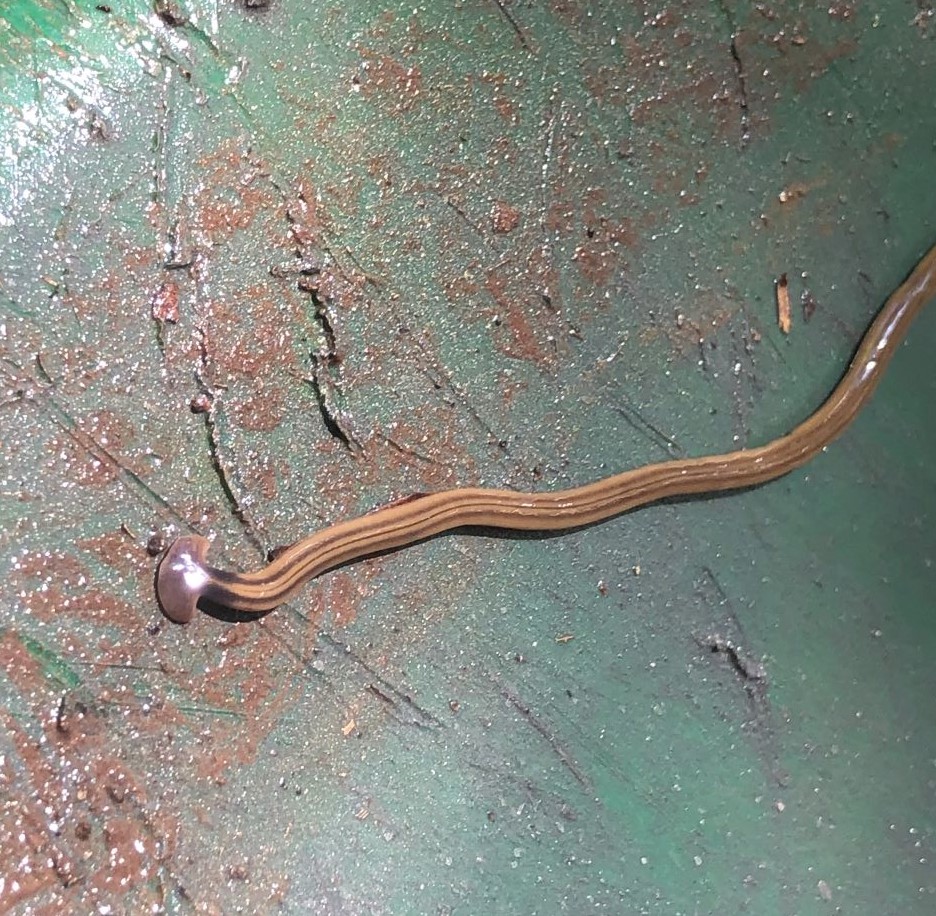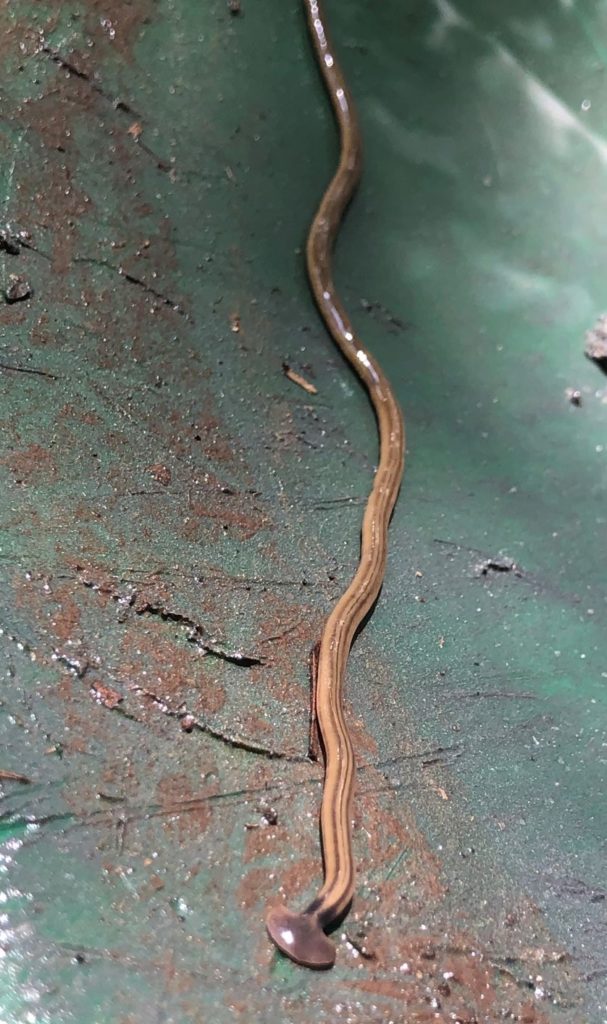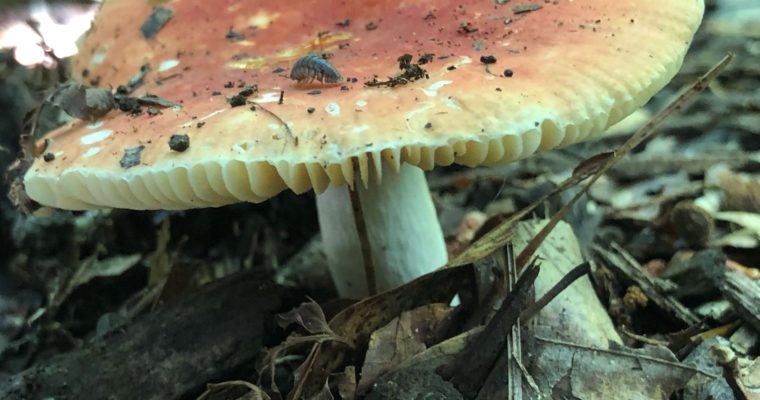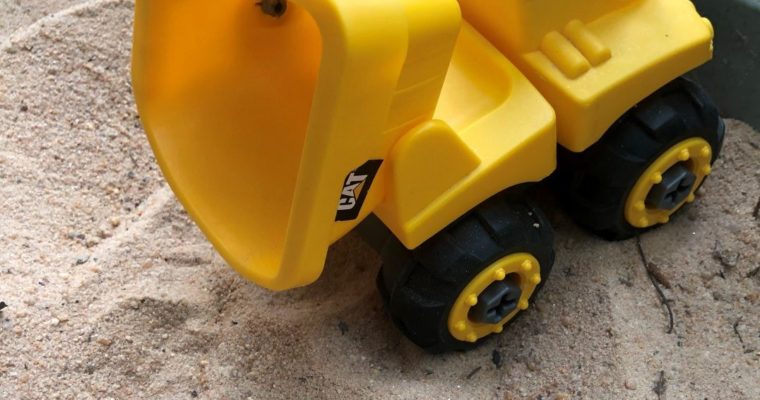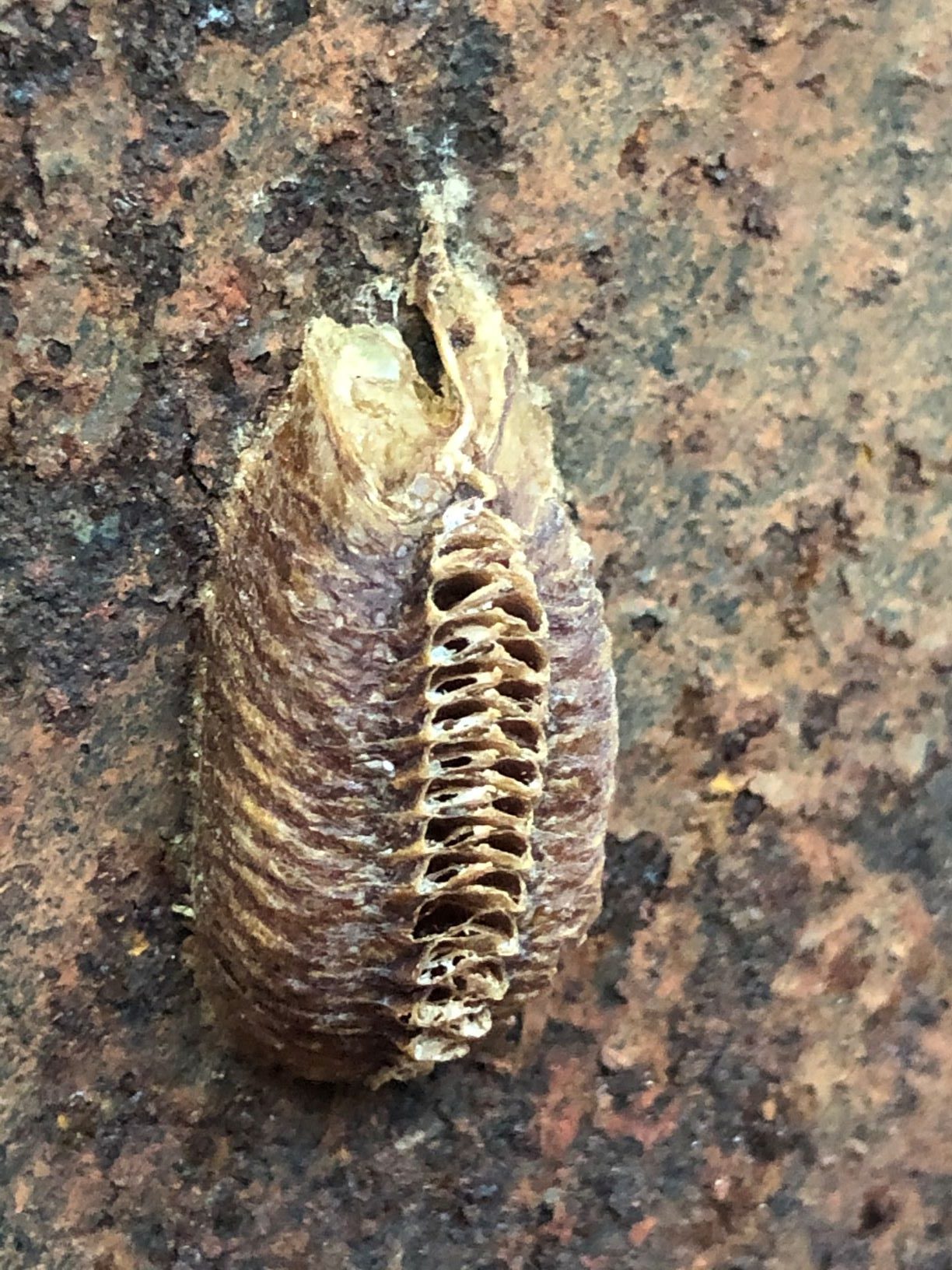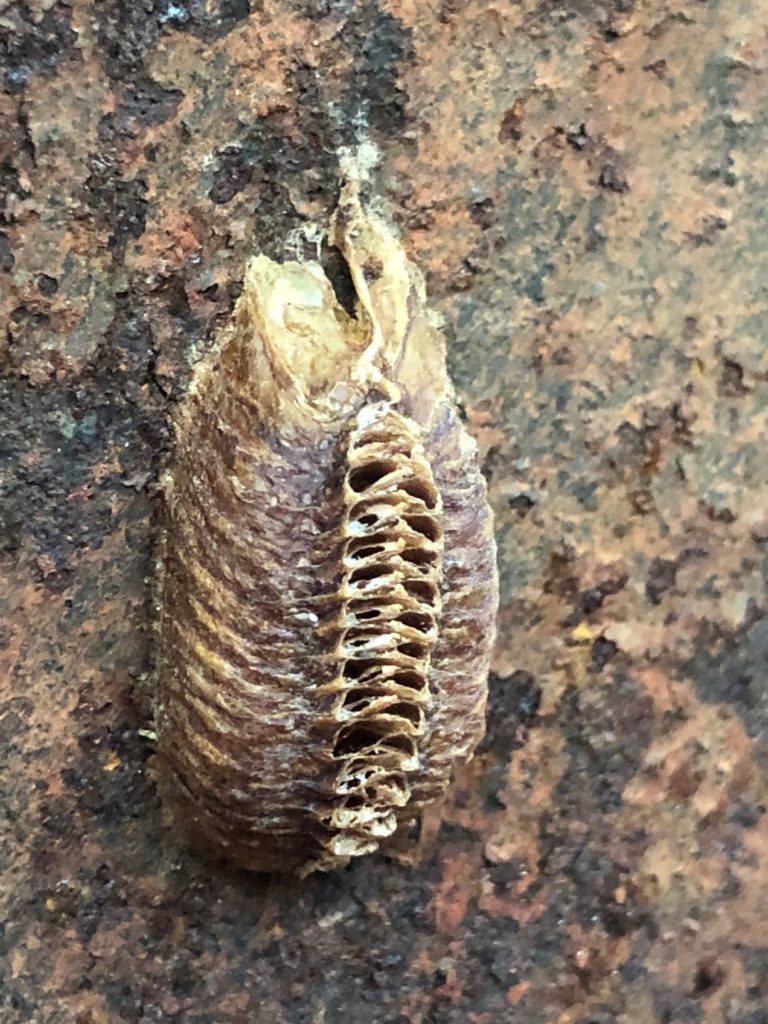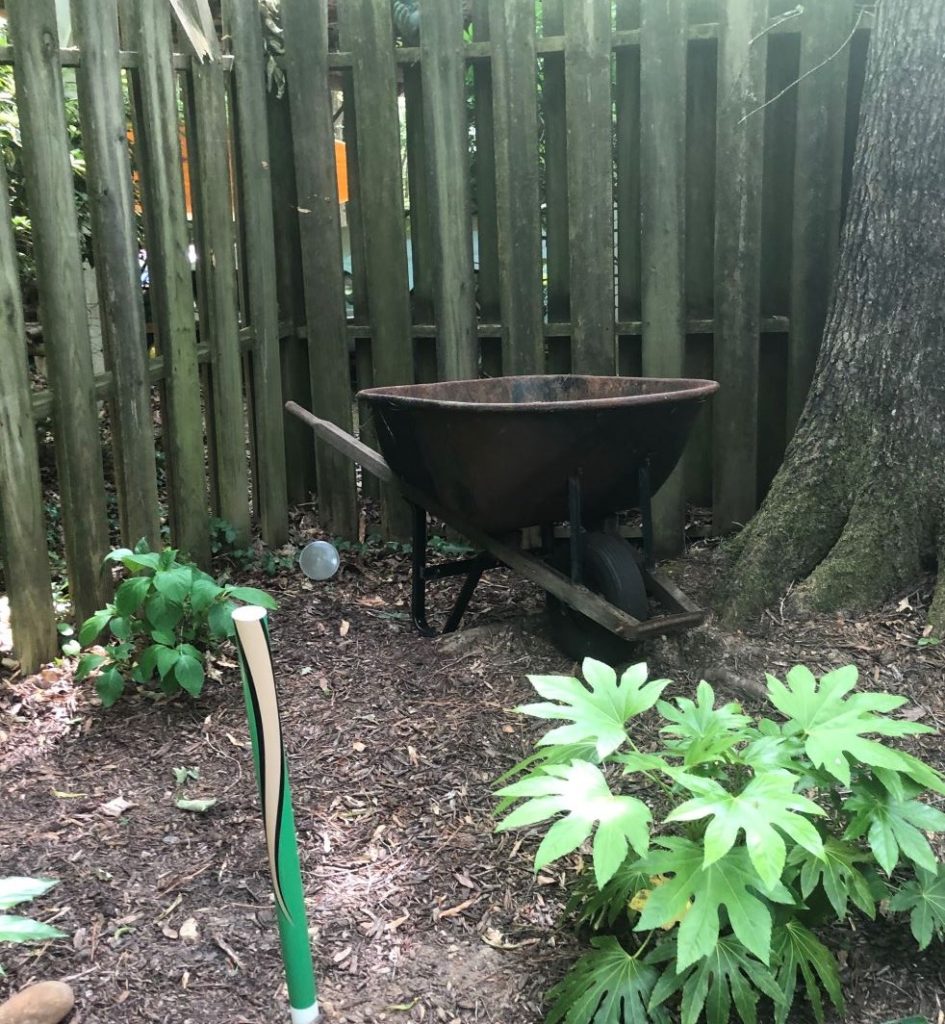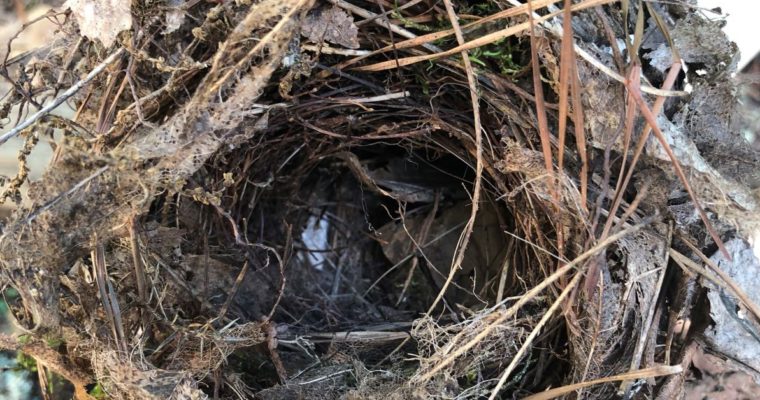Have you started seeing ladybugs in your garden yet? I hope so!! I have always felt that seeing ladybugs in your garden meant nothing but good luck!
Locryn learned today that they are technically beetles and not bugs. He also learned that they consume almost 5,000 aphids in their lifetime! Locryn wasn’t quite sure what an aphid was yet, but he understood that they were not one of Mom’s favorite bugs as they ate her roses!
Our toddler, Locryn, also learned that the ladybug’s bright colors were there to warn their would-be attackers that they taste horrible! A few attackers that don’t seem to mind their horrible taste are wheel bugs, stink bugs, and spiders.
Since ladybugs are so beneficial to garden, they are sold in many of your local plant nurseries! They are a highly effective alternative to other pest management treatments. Just don’t spray any pesticides or fungicides that might kill the ladybugs!
ENJOY!
